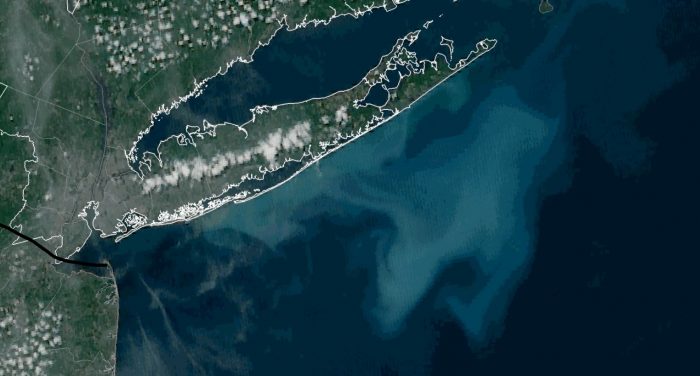By Aidan Johnson
From a young age, children are taught that the ocean isn’t actually blue but is simply reflecting the color of the sky. However, the ocean recently took on a turquoise color not caused by the sky but by organisms called phytoplankton in the water.
Phytoplankton are tiny, commonly single-celled photosynthetic organisms in bodies of water that are carried by tides and currents and are too weak to swim against them.
Along the South Shore, all the way from Montauk to Brooklyn and spanning about 100 miles into the Atlantic Ocean, there is an algal bloom full of a specific type of phytoplankton called coccolithophores, explained Christopher Gobler, a professor at the School of Marine and Atmospheric Sciences at Stony Brook University.
According to Gobler, this particular type of phytoplankton has a shell that’s made of calcium carbonate, which is the same substance that clam shells are made of, albeit to a much larger degree.
“What can happen is that after [the coccolithophores have] grown for a while, the shell begins to dissolve and then they might start dying off,” he said in an interview. “And so the coloration seems to be from the dissolution of that shell. It looks green, but it’s really just the interaction of the calcium carbonate with the seawater and the sunlight that collectively leads to that color.”
Gobler also clarified that the coccolithophores do not pose a direct health risk to sea life, but instead “fuel the food chain.”
“And so for the present time at least … we can call it a neutral deposit,” he said.
The bloom already seems to be dissipating, according to Gobler, which means that the sky will once again take credit for the water’s blue appearance.





